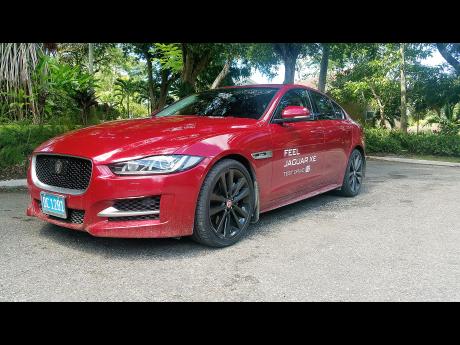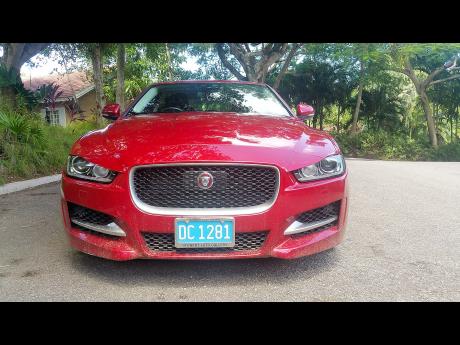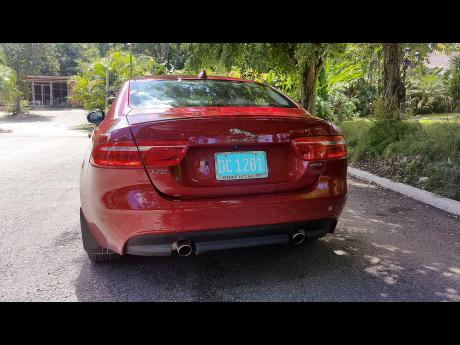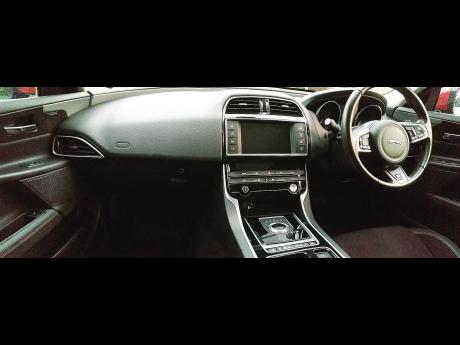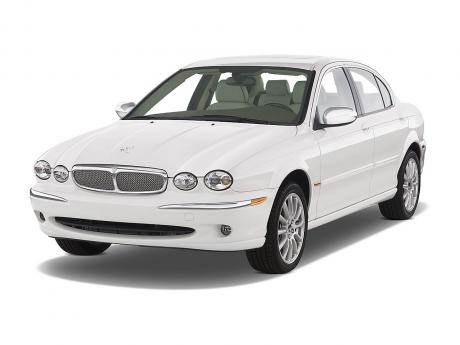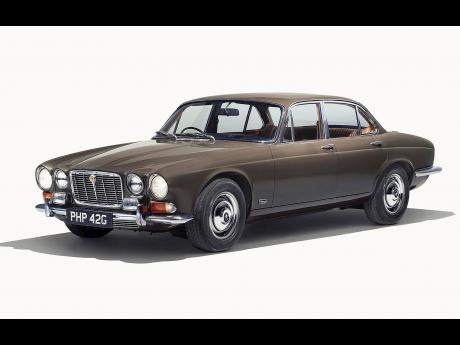A great blend of fun and luxury
Until recent years in the Jamaican market, Jaguars were prominently known for their XJ models. These were full-size sedans, with the '60s and '70s models having two gas tanks on both rear-side panels of the vehicle. They were a status symbol of the wealthy, and by auto standards, were indestructible. Even now, some can be seen at garages or homes barely rusting away. Since then, Jaguar has been constantly rejigging its marketing strategy to capture the shrinking sedan market.
The company had respectable success with the X-Type from 2001-2009 but decided a radical change was needed to reclaim its former dominance in the sedan arena.
The company has since switched from the pronounced iconic four circular headlights and rectangular grille to something more sleek and contemporary. In 2004, at the Geneva Motor Show, it launched the XE, a compact premium sedan that competes with BMW 3 series and Mercedes Benz C class.
Exterior fitting for speed
From the front, the headlights rest on the 'J' blade Daytime Running Lights which are positioned above the front vents. The black front grille is outlined with chrome which gives it a contrasting effect and adds to its intimidating stance.
Not just for the purpose of performance, but also aesthetics, the black 19" split-spoke rims are definitely an attention grabber, especially with the low-profile tyres. This, along with the R-Sport chrome badge on the side fender, exudes a sense of speed and power.
To the rear, is a sloping coupe-type roofline that runs to meet the sharp trunk line, which has a short hangover. Finishing off this sport-themed look are the twin exhaust located at opposite sides of the kitted bumper.
Something different on the inside
The interior, from a visual perspective, looks like something different. For one, the dashboard extends onto the door panels, which seem very futuristic and edgy. It's also flanked with leather and piano-black material, but what makes it standout is the contrasting effect it has against the chrome outlines. It's used strategically around the air vents, centre console and on the steering wheel to add character to the interior.
Along the driver's door panel are all the usual control knobs. However, the most important ones are the programmable seat settings. To activate, press 'M' then one of the numbers you want to assign to your preferred seating position. This comes in very handy, for example, when someone is cleaning the vehicle and has to adjust the seats to find and remove dirt. There is no need to find back your favourite position, as you can simply press the assigned number and the car electronically readjusts the seat
Being a sports car, the side bolsters are thick to ensure the driver doesn't move around and he is always in a comfortable position in the 10-way electronic control seat. The driver can then fix his eyes to the centre console, which is elegantly designed with symmetrical lines and legible fonts and symbols.
Two rows are dedicated to the climate control and above is an 8" touch-screen system, which displays four panels by default: media, phone, temperature and GPS location. The infotainment system is called In-control Touch Pro, which visually looks stunning, but can also be a bit sluggish with its responsiveness.
Making up for this deficiency is the 11 speaker Meridian audio system which sounds very bass heavy and delivers crystal-clear music.
The start button is below the climate controls and once it is pressed, a rotary gear selector rises from a housing in the centre console. The newness of this can feel a bit awkward at first, but it is very easy to become accustomed to.
Behind this is the traction control system, All Surface Progress Control, which borrows from sister brand Land Rover. It allows for better traction in snow and ice. However, for us this is gravel and dirt, conditions traditionally regarded as challenging for rear-wheel drive cars.
Rear passengers are also not left out with rear A/C vents, which is quite uncommon for compact sedans. The seats can also fold in a 40/20/40 position and it has a truck space of 455 litres.
Fun on the highway
At first, I took it on the North-South Highway and for the initial 10 minutes it was exhilarating, especially when I shifted from 'Eco' to 'Normal' mode. However, the journey quickly felt mundane for the skill set of the two-litre Ingenium turbocharged engine
This car doesn't want to go through the motion, it wants to be handled. So on my way to Ocho Rios, I took the Moneague exit from the toll road.
Driving on the traditional route, the car came alive and the aluminum suspension gave it a light and engaging performance. It felt similar to a go-kart, meaning, anywhere the nose was pointed the car went and once the paddle shifters were activated, the eight-speed transmission came to life. Despite all the electronic assistance, it did feel like a driver's car, as it was not intrusive to the point where the car felt dull and controlling.
With a curb weight of 3,675 pounds, it has a perfect weight-to-power ratio that any driver would appreciate. Given that it is a rear-wheel drive with 240 hp, the back can misbehave once the power is applied aggressively. This is one of the cool things about a car like this, the driver always has to be engaged as it is a little more fun than luxury.
Gas tank size: 63L
Tested model: 2.0 L Jaguar Land Rover Ingenium 4-cylinder turbocharged diesel
Drivetrain: Rear wheel drive, 8-speed automatic
Price: High spec, $10.9 million
Competition: Audi A4, BMW 3 series and Mercedes Benz C class
Contact: 876-968-0930, email: customercarejlrjamaica.com.
For feedback and comments email yl.jamaicagmail.com

